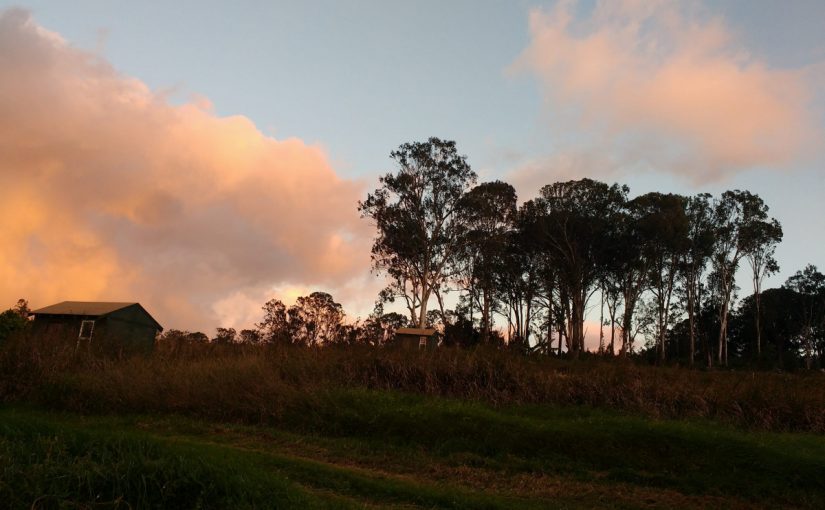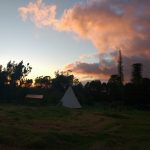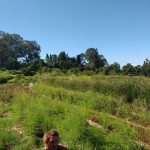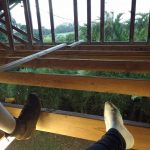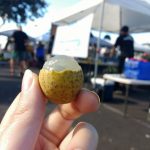This week the winds blew hard and forced us to adapt, integrate and find balance.
We unpacked and started to settle in at our lecturer Evan’s farm Pono Grown. I was lucky enough to set up my tent in a loft barn space and I have traded some hands on hours for helping out in the kitchen. Some of the work load coupled with long days and active nights have proven difficult for me to efficiently manage with my autoimmune diseases- but I am learning so much by preparing food. Our cooks Taryn and Chance have been harvesting a variety of ingredients from whichever farm we currently are on and making fresh dishes from the aina (land). In this week alone we have made flatbreads from turning manyoka (a root that I helped process by cutting and peeling) into dough and very yummy stir fries and curries. It’s been a whole new world to learn how to use every part of the plant you’ve harvested in dishes as well as cooking from a tropical palette. For instance- sweet potato leaves can be turned into pesto and most types of stems can be sauteed to add to any vegetable medley. Taryn also gave us a demonstration on how to make vegan golden milk- an anti-inflammatory concotion that most effectively enhances the body’s ability to uptake nutrients and benefits from tumeric root.
The Kona winds blew strong this week but we packed in a lot of curriculum. Starting with zones and sector mapping- the social permaculture threads are starting to reveal themselves in our lessons. Zones label areas of your external space according to its relative use in your daily life. On a deeper level, zones are designed for integration and to create accessible what elements of your land you most want to be present with. What I appreciate about this lesson is that while Zone 0 is for your home space, there is an even deeper level of Zone 00 for self. Allowing room for introspection, managing, and growth of self is impertinent for permaculturists investing their energy toward re-naturalizing intentional wild spaces. If there is no connection or understanding of our own natural self and how we contribute to the earth- how can we expect the earth to give back to us?
Sector analysis has to be done almost first in a design in order to understand the existing elements of the land. Everything about that land’s behaviors from the sun, wind, climate, water flow, topography, wildlife, and even potential hazards like landslides and fires need to be drawn from observation. As soon as we began practicing this type of connective observation I’ve seen my surroundings in a different way. Some observations Evan shared about his land were to notice the plants that exist for themselves and the magic that they hold without having to be “useful”. There is a strong old avocado tree in his property that I really connected with and he talked to the class about the importance of allowing some things to just be and let them grow. That tree doesn’t hold much fruit anymore, or at least nothing that would be viable to consume, but it is a perfect shady spot for the preschool class that comes there to play on and admire and be protected by a little pocket of rich, pure nature.
As the new moon passed we shed our anxieties and dove deeper into the dynamics of community living. Interacting with the same people for almost the entirety of every day has been an experience I’ve never had and has guided me to be more intentional with my behavior. Reflecting this, most of the week has been a combination of elements to be considered when designing a permaculture system. From soil building, to water catchment, compost and animal introduction; every part must be considered for optimal symbiosis with the land. We planted baby trees and put intentions of love and strength to excel their growth because every energy that interacts with the land and the flora are being absorbed. It’s amazing to know that one day they will grow tall and lush with fruit and that Evan’s family might be climbing and gathering abundance from them to share with the community.
There is value in the space we hold and this week has taught me to honor the space I take up respectfully and harmoniously.
